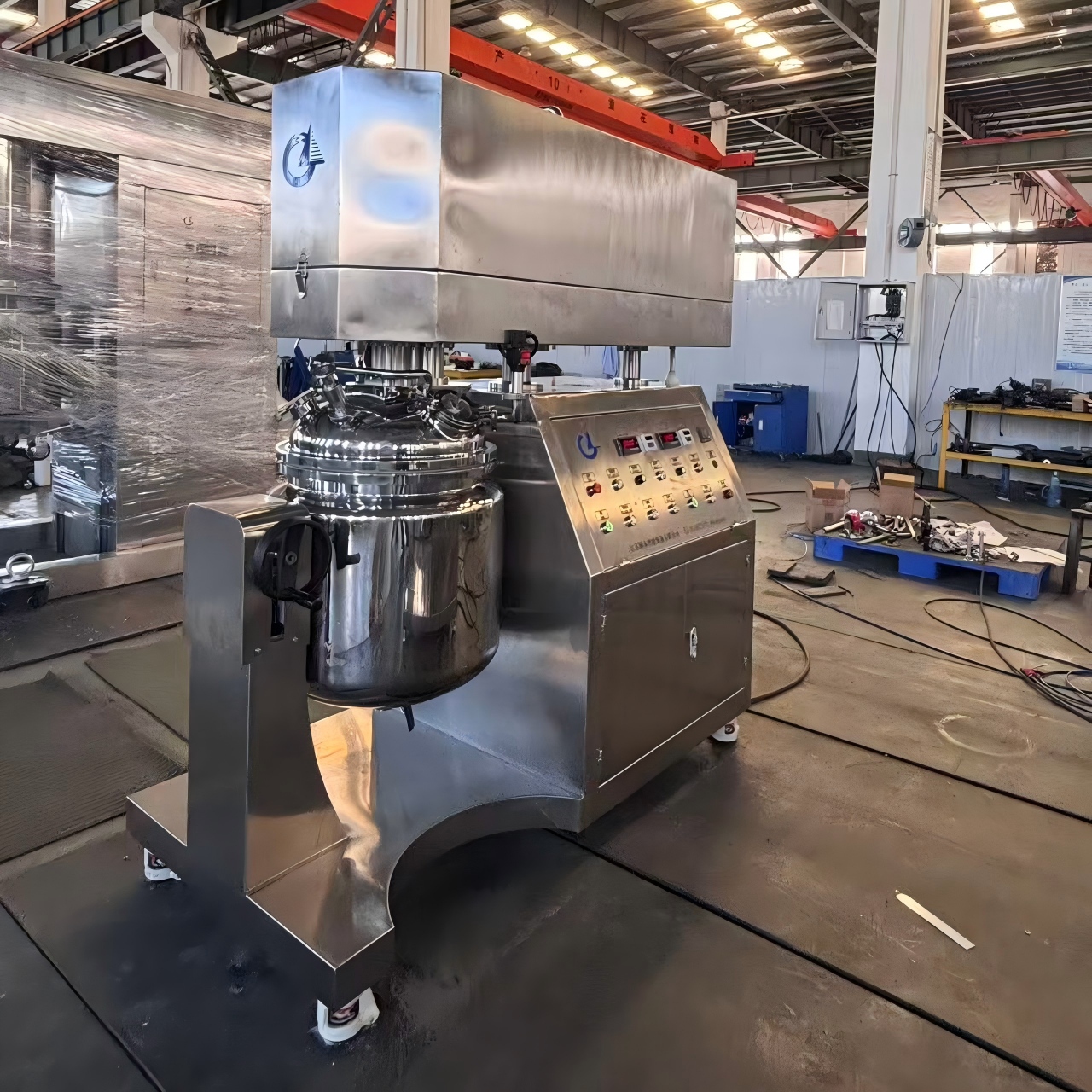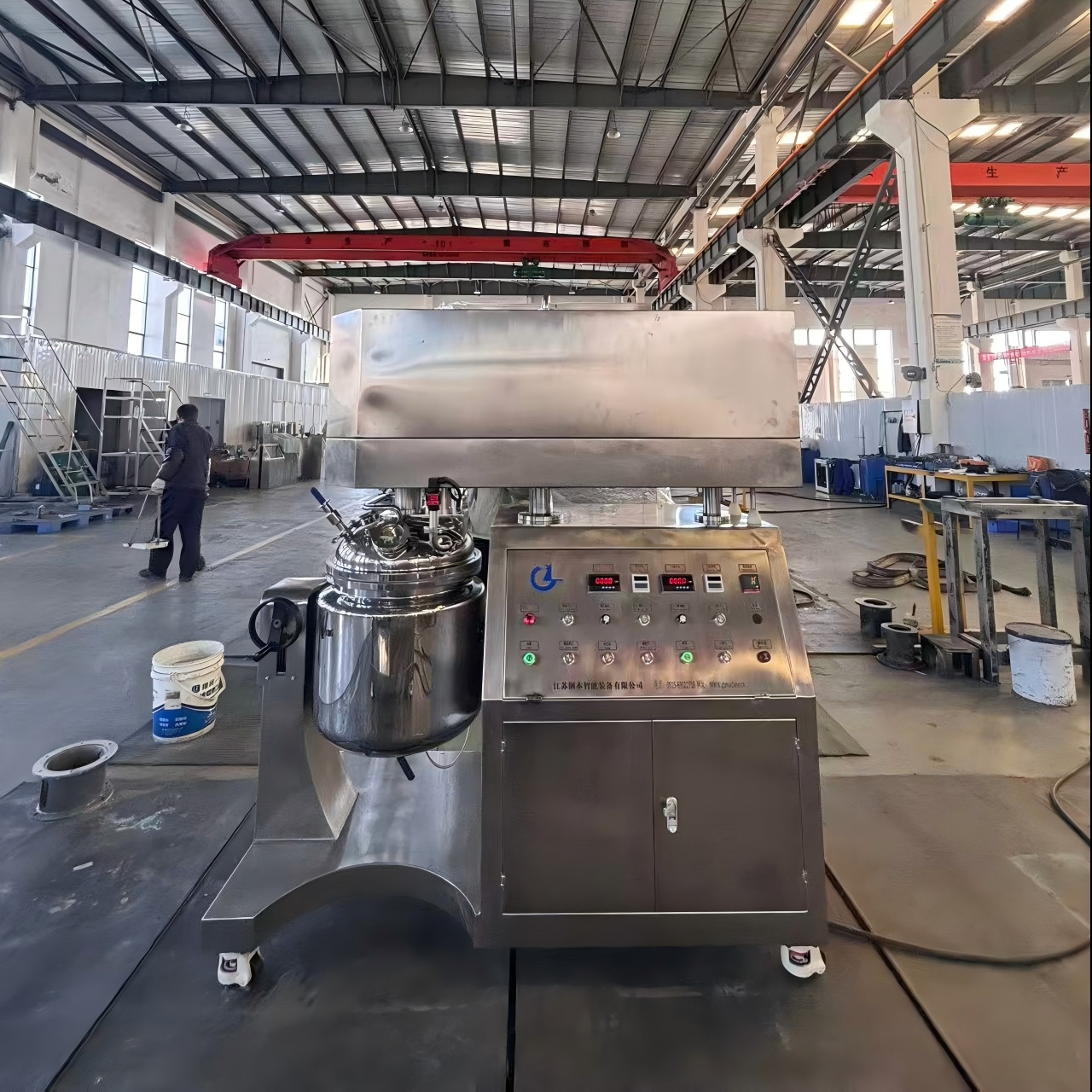Vacuum Emulsifying Homogenizer: How to Achieve Nano-Scale Dispersion for High-Viscosity Materials?
In the cosmetics, pharmaceutical, and food industries, achieving nano-scale dispersion of high-viscosity materials is a critical challenge for enhancing product stability, efficacy, and sensory quality. Traditional dispersion methods often struggle with inefficiency, high energy consumption, and imprecise particle size control. The vacuum emulsifying homogenizer, with its unique synergy of mechanical and physical mechanisms, has emerged as an ideal solution for nano-scale dispersion of high-viscosity materials. This article explores the key technological pathways using insights from Jiangsu GangBen Mixer Manufacturer, a leader in this field.
1. Core Working Principles of Vacuum Emulsifying Homogenizers
The vacuum emulsifying homogenizer achieves dispersion through the stator-rotor high-shear system combined with vacuum environment control. During operation, the rotor rotates at speeds ranging from thousands to tens of thousands of RPM, generating ultra-high shear forces in the narrow gap (typically 0.1–1 mm) between the stator and rotor. This shear force instantly breaks down oil-water phases, solid particles, or nanomaterials into micron- or even nanometer-scale sizes. For example, in cosmetic emulsion production, this technology can reduce oil droplet diameters from over 100 μm to 200 nm–2 μm, forming stable emulsions.
Simultaneously, the vacuum system serves three critical functions:
Bubble elimination: Preventing oxidation and instability caused by air incorporation during traditional stirring.
Material transfer facilitation: Using negative pressure to precisely transfer raw materials from water and oil phase tanks into the emulsification vessel, minimizing residue.
Optimized dispersion environment: Under anaerobic conditions, nanomaterials (e.g., graphene, titanium dioxide) exhibit higher surface activity, enabling more uniform dispersion.
2. Technological Breakthroughs for Nano-Scale Dispersion in High-Viscosity Materials
The primary challenge with high-viscosity materials (e.g., toothpaste, creams, concentrated nanosuspensions) lies in the inability of traditional shear forces to penetrate the viscous medium effectively, leading to re-agglomeration of nanoparticles due to van der Waals forces. Jiangsu GangBen Mixer Manufacturer addresses this through the following innovations:
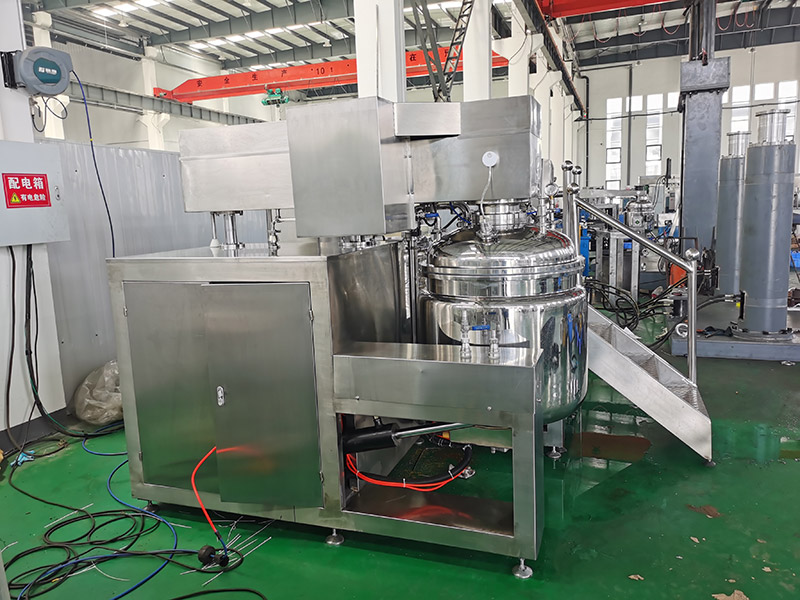
2.1 Modular Stator-Rotor Design for Multi-Stage Processing
GangBen’s vacuum emulsifying homogenizers feature interchangeable stator-rotor modules tailored to different viscosity ranges. For instance:
Low-viscosity materials: Wide-gap, multi-tooth structures enhance turbulence.
High-viscosity materials: Narrow-gap, sharp-tooth designs ensure shear force penetration, directly acting on nanoparticles.
In laboratory tests, their 50L vacuum emulsifier achieved an average particle size of 380 nm (D90 < 800 nm) for 5000 mPa·s nano-silicone oil, a benchmark in the industry.
2.2 Synergistic Vacuum-Shear-Heating Process
To overcome nanoparticle agglomeration driven by surface energy, GangBen employs a three-stage process control:
Pre-dispersion stage: Under vacuum, low-speed stirring (50–100 RPM) mixes nanopowders with base oils gently, preventing dust dispersion from direct high-speed shearing.
High-shear stage: The homogenizer operates at 10,000–30,000 RPM while heating the material to 40–60°C via electric or steam heating, reducing viscosity and enhancing flowability.
Vacuum degassing stage: Continuous vacuum pumping for 10–15 minutes removes residual bubbles and volatile components.
This approach improved SPF stability by 23% and texture uniformity in a nano-sunscreen production line for a major cosmetics brand.
2.3 Surface Modification-Assisted Dispersion for Agglomerative Nanomaterials
For strongly agglomerative materials like graphene or carbon nanotubes, GangBen recommends a pre-surface modification + vacuum emulsification synergy:
Pre-modification: Nanomaterials are treated with ionic liquids or organosilanes to introduce hydrophilic/lipophilic groups, reducing surface energy.
Synergistic dispersion: Modified nanomaterials are added to the vacuum emulsifier, where high shear forces break down residual agglomerates while the vacuum prevents modifier volatilization.
Tests showed graphene dispersion concentration in silicone oil increased from 0.5 mg/mL to 2.8 mg/mL with no sedimentation over six months.
3. Jiangsu GangBen Mixer Manufacturer’s Industry Impact
As a pioneer in vacuum emulsifying homogenizers, Jiangsu GangBen has served over 3,000 global clients with customized solutions. Notable projects include:
International Cosmetics Giant: A 1000L GangBen production line achieved nano-scale sunscreen agent dispersion, boosting light transmittance (380 nm) from 85% to 97% and significantly enhancing UV protection.
Domestic Pharmaceutical Enterprise: A 50L laboratory-scale GangBen homogenizer enabled nano-drug cream development, increasing drug release rates by 40% and improving
News
- Latest News
- Solutions
- FAQ
Recommend Products
-
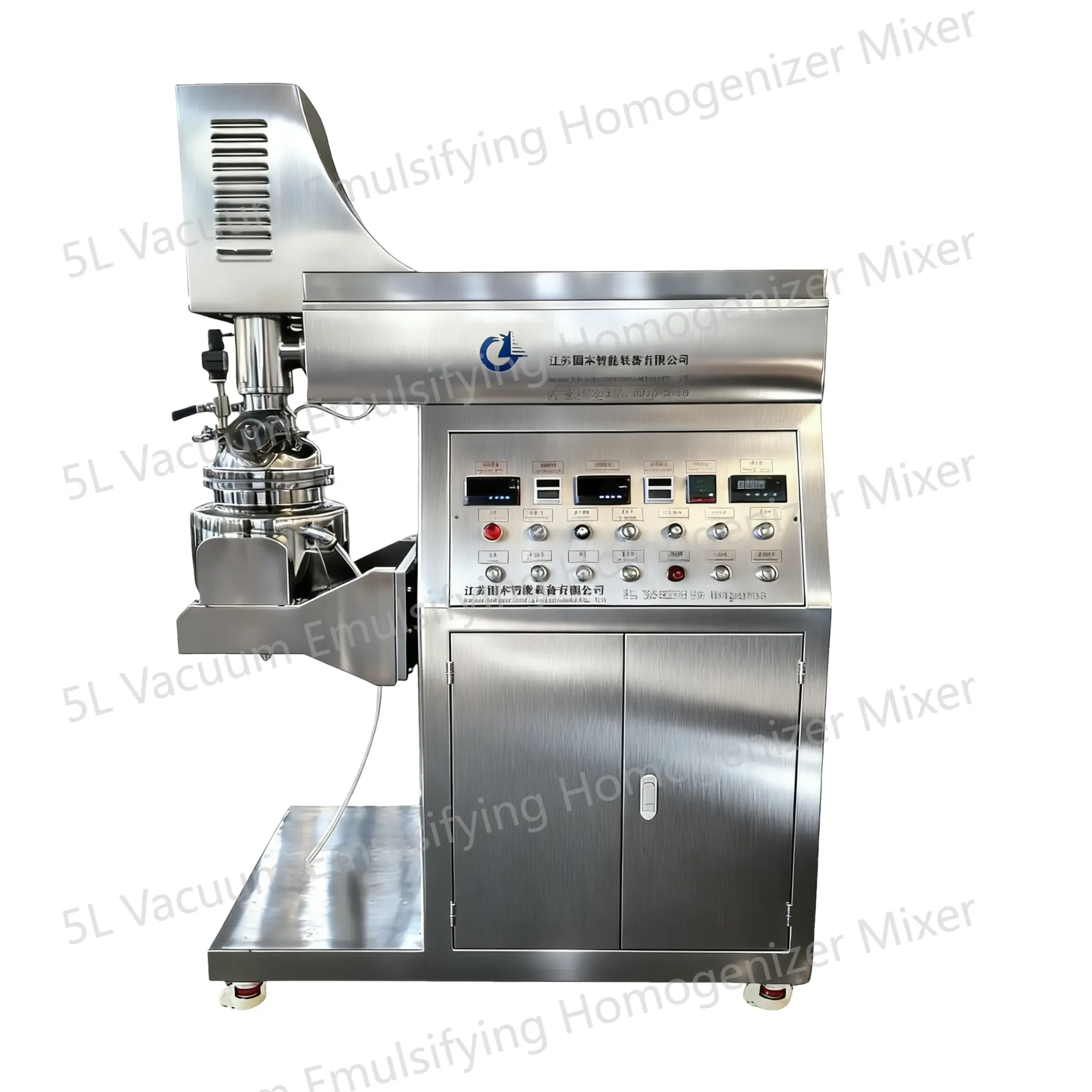 5L Vacuum Emulsifying Homogenizer Mixer
5L Vacuum Emulsifying Homogenizer MixerThe 5L vacuum emulsifying mixer is a device designed for emulsifying and mixing various substances in a vacuum environment. This equipment is equipped with a mixing tank with a capacity of 5 liters and is widely applied in industries such as food, pharmaceuticals, cosmetics, and pesticides.
-
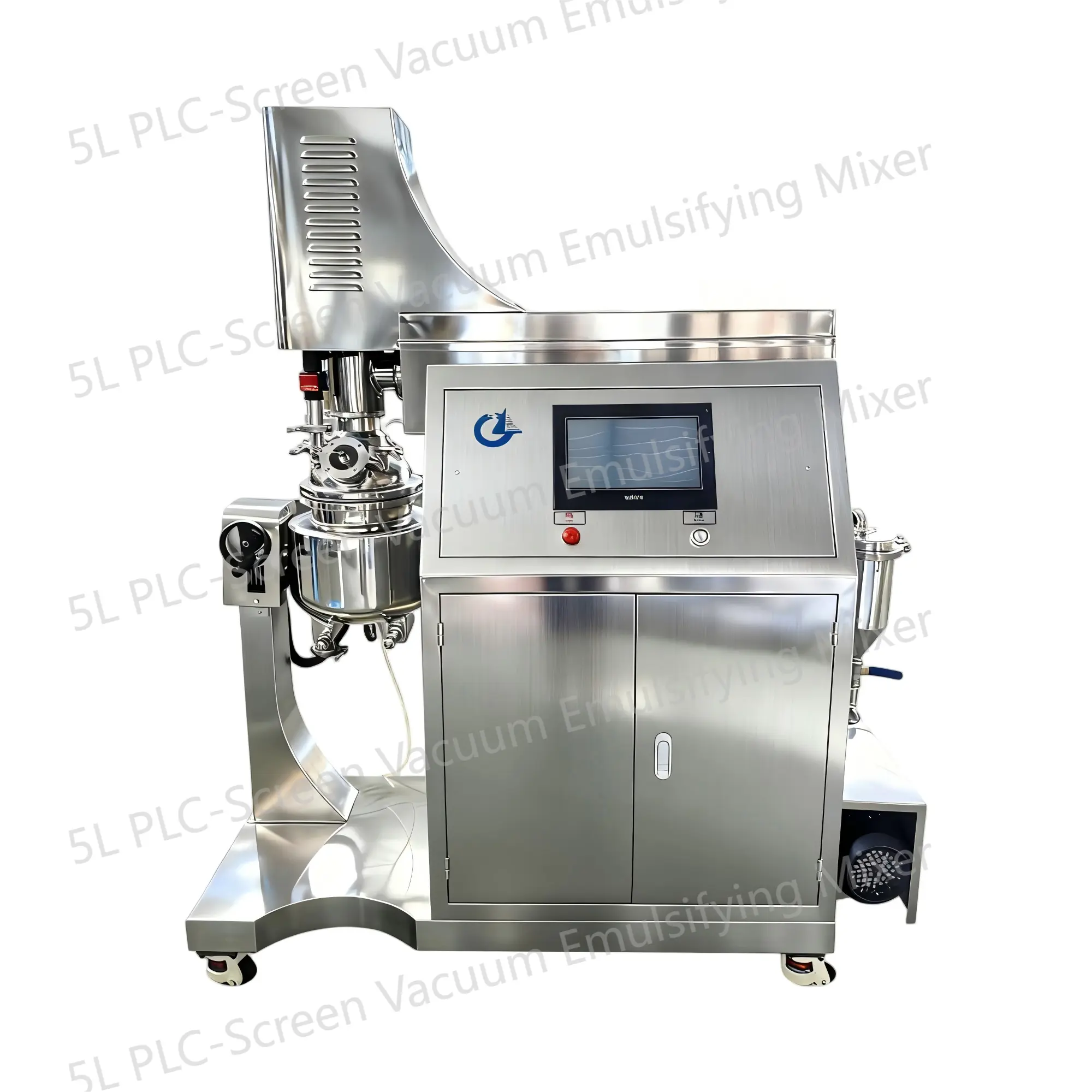 5L PLC-Screen Vacuum Emulsifying Mixer
5L PLC-Screen Vacuum Emulsifying MixerThe 5L PLC-Screen Vacuum Emulsifying Mixer is a device designed for emulsifying and mixing various substances in a vacuum environment. This equipment is equipped with a mixing tank with a capacity of 5 liters and is widely applied in industries such as food, pharmaceuticals, cosmetics, and pesticides.
-
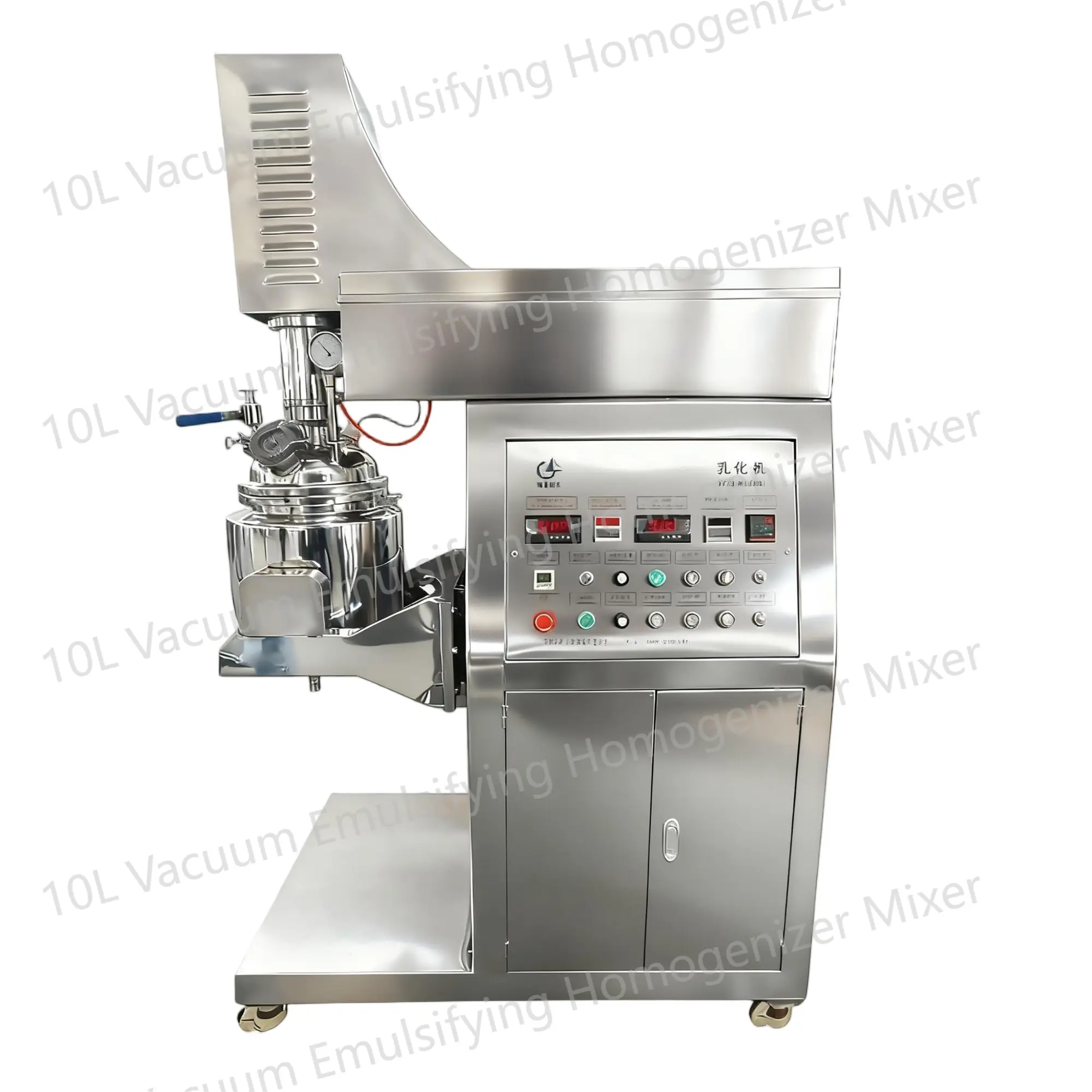 10L Vacuum Emulsifying Homogenizer Mixer
10L Vacuum Emulsifying Homogenizer MixerThe 10L Vacuum Emulsifying Mixer is a device used for emulsifying and mixing various substances in a vacuum environment. It is commonly used in industries such as food, cosmetics, and pharmaceuticals.


 English
English Russian
Russian French
French Spanish
Spanish Portuguese
Portuguese Korean
Korean Japanese
Japanese Thai
Thai